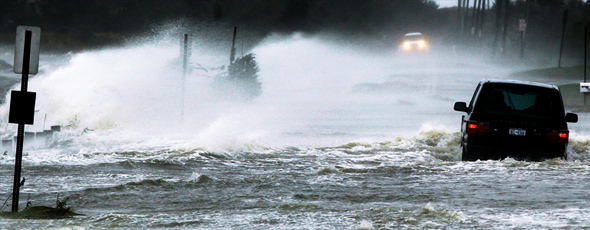
The OT talked to Rebecca Solnit, author of ‘A Paradise Built in Hell: The Extraordinary Communities That Arise in Disaster’, about Hurricane Sandy and the Occupy Sandy response.
The Occupied Times: After Hurricane Sandy, Occupy activists have been amongst the first to rush in with aid and support – it is almost as if they had been waiting for this moment. Why do you think this is?
Rebecca Solnit: Occupy can be seen as a response to disaster from its beginnings: the economic disaster was creating homelessness, hunger, debt peonage, broken lives and a widening class divide. Occupy operated very much like a community plunged into disaster-aftermath – the reaction to the crisis was to build a tented community, complete with kitchen and clinic. Post- Hurricane Sandy, Occupy activists were, again, amongst the first to rush in with aid and support.
Radical organisations are in a sense always disaster-preparedness groups. They create networks of public-minded individuals, have the ability to converge and marshal resources, and maintain an attitude of disaffection, or autonomy, from mainstream institutions. When disaster struck in New Orleans, Veterans for Peace was one of the first organisations to provide relief, while volunteer groups associated with the Rainbow Family ran long-lasting community kitchens and related projects.
OT: What similarities do you see between contemporary environmental disasters such as Katrina and Sandy, and the San Francisco earthquake in 1906?
RS: Well Sandy did not have much in the way of media hysteria, pernicious rumors, and social divides being acted upon, while Katrina and the 1906 earthquake did, in spades. After the 1906 San Francisco earthquake, the US Army marched in to prevent the civil disorder they presumed ordinary citizens would create. Reputedly the largest peacetime military presence in an American city to date, this was essentially a hostile occupation. The assumption was that human nature is selfish, chaotic and bestial, and that only state-sanctioned violence could prevent this nature from bursting forth. After Katrina, the governor of Louisiana deployed National Guard troops ‘armed and ready to shoot and kill’ to New Orleans – not exactly an expression of solidarity or a description of humanitarian relief. Meanwhile, international media, the city’s mayor and its police chief, spread rumours about orgies of killing, raping and pillaging that turned the afflicted into the enemy and a relief effort into a military assault in which many people were shot by police, often in the back. The response to the disaster, in both cases, was a disaster.
In New York in 2012, the people most affected by Hurricane Sandy were diverse, including both middle-class coastal dwellers and public housing occupants. There wasn’t a single group to demonise. Some sections of the media ran stories about looting but they didn’t get much traction as there was meaningful pushback from people who knew better.
OT: Would you say that natural disasters bring out the anarchist in us, or perhaps reawaken a form of social obligation to other human beings that our individualistic societies have expelled us from?
RS: The version of human nature seen in disaster is far more generous, communitarian and even utopian than Social Darwinists and Hobbesians would allow. Our behaviour in these situations suggests not only what we are capable of, but what we yearn for. In a disaster the status quo ceases to exist, as the usual people and institutions are no longer in charge, and this allows for collective improvisation. The situation is literally anarchic, in that there is not much authority. There are too many shattered, flooded, destroyed houses and neighborhoods, and too many desperately needy people for the emergency workers to respond to. There are too many decisions to be made, in too many places, for them to be made by centralised authority; it is impossible to send word of the ten thousand emergencies up the chain of command for decisions. Often there isn’t even much of a chain of command, since communication equipment, electricity, and even roads may have failed. The immediate aftermath of a disaster is very much like the throes of a revolution: no one is in charge, anything is possible, and everyone is immersed in the moment in uncertainty and anxiety, but also in solidarity and a kind of role liberation.
Of course, disasters are terrible, but still the potent generosity, creativity, empathy and collaborative genius of the response can be celebrated.
OT: How can the co-operation that emerges in these situations be kept going? Will we inevitably fall back to old habits?
RS: Nothing is inevitable, and not everyone goes back after these extraordinary moments, but what can they go forward toward? There is a vigour in carnivals, revolutions, uprisings and disaster responses that is hard to sustain, but maybe we should not ask it to be sustained; while falling in love is great, growing from infatuation to a long-term relationship often means trading fizzy for solid. Like carnivals, revolutions and disasters generate a rupture, and in that breach is space to rethink, reorganise and renew our relations to each other; but that energy also subsides. How to make the transition, building on the beauty of the initial moments? Occupy, despite its problems, generated an amazing shift where we saw how many people hate inequality and corruption and dream of something better. The question isn’t why the spring doesn’t last but how it heads into summer and autumn; and what the harvest is.





